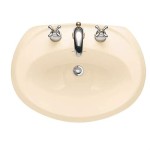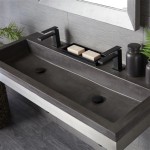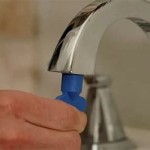How Does a Bathroom Door Handle Lock Work?
Bathroom door handle locks, a common feature in homes and public restrooms, provide privacy and security. These simple yet effective mechanisms allow individuals to lock their doors from the inside while maintaining the ability to unlock them from the outside. Understanding how these locks function is crucial for appreciating their design and ensuring their proper operation.
The Components of a Bathroom Door Handle Lock
A bathroom door handle lock consists of several key components that work together to achieve its purpose. These include:
- Handle: This is the part that users grasp and turn to lock or unlock the door.
- Latch: A metal piece that extends from the handle and engages with the strike plate on the door frame.
- Strike Plate: A rectangular piece of metal mounted on the door frame with a cut-out to receive the latch.
- Deadbolt (Optional): Some locks include a deadbolt, which provides additional security by extending a metal rod into the door frame when engaged.
- Locking Mechanism: The internal mechanism that allows the handle to lock and unlock the latch.
- Keyhole (Occasionally included): Some bathroom door handle locks have a keyhole on the exterior side for unlocking the door from the outside.
The Locking Process
The locking process typically begins with turning the handle. This motion engages the latch, which extends and enters the strike plate on the door frame. The turning of the handle also engages the locking mechanism, which prevents the latch from retracting. This prevents the door from opening from the outside, ensuring privacy.
In locks with a deadbolt, turning the deadbolt handle or key moves a metal rod into the door frame, providing an additional level of security.
Unlocking the Door
To unlock the door from the inside, users simply turn the handle in the opposite direction. This retracts the latch, allowing the door to swing open. In locks with a deadbolt, unlocking the deadbolt involves retracting the metal rod.
Unlocking the door from the outside typically requires a key. This key is inserted into the keyhole, and turning it releases the locking mechanism, allowing the latch to retract. In locks without a keyhole, a mechanism such as a small tool or a credit card can sometimes be used to unlock the latch from the outside.
Types of Bathroom Door Handle Locks
Bathroom door handle locks come in several varieties depending on their features and locking mechanisms. Common types include:
- Privacy Locks: These locks are designed for interior doors and are usually unlocked by pressing the handle down. They are most commonly used for bathrooms, bedrooms, and closets.
- Passage Locks: These locks are typically for doors that do not require locking and can be opened with a simple turn of the handle.
- Dummy Locks: These locks have no functional mechanism and are purely aesthetic, providing the appearance of a lock without the actual locking capability.
Additionally, the locking mechanism can be either a traditional keyed lock or a more modern lever handle lock. The keyed lock is operated by turning a key, while the lever handle lock uses a simple lever to engage and disengage the latch.
Troubleshooting and Maintenance
Bathroom door handle locks are relatively simple and durable, but they can occasionally malfunction. Common issues include:
- Stiff Handle: If the handle is stiff or difficult to turn, it may indicate that the locking mechanism requires lubrication. A few drops of oil or lubricant can often solve this issue.
- Latch Not Engaging: If the latch does not engage with the strike plate, it may be misaligned or damaged. Adjusting the strike plate or replacing the latch may be necessary.
- Key Not Turning: If the key does not turn in the keyhole, it might be worn out, damaged, or stuck. Replacing the key or cleaning out the keyhole might resolve the issue.
Regular maintenance, such as cleaning the lock periodically and lubricating moving parts, can help prevent malfunctions and extend the life of the lock.

Bathroom Door Lock Types A Helpful Guide With Images

How To Fit A Bathroom Thumb Turn Lock Fantastic Services

Bathroom Door Lock Types A Helpful Guide With Images

Door Handles For Dummies

Bathroom Door Lock Types A Helpful Guide With Images

Diy Project Installing A Bathroom Lock

Bathroom Door Lock Types A Helpful Guide With Images

Bathroom Door Lock Types A Helpful Guide With Images

What Is Door Knob The Most Comprehensive Introduction

Parts Of Internal Door Handles Explained Specification Advice
Related Posts







